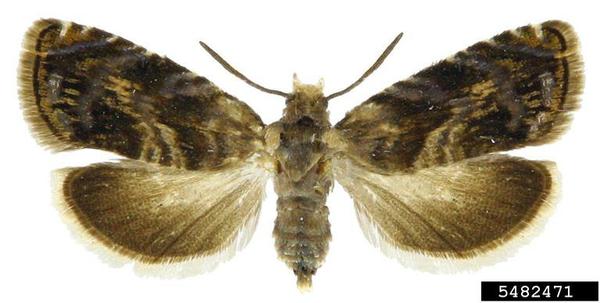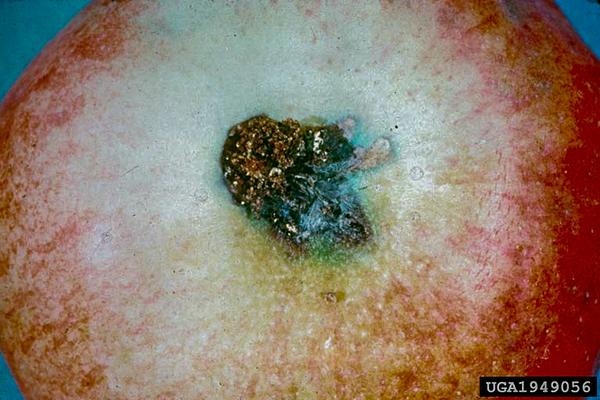Background and Description
The lesser appleworm (Grapholita prunivora; LAW) is a tortricid moth native to eastern North America and now found throughout the US and much of Canada. In addition to apple, LAW is known to attack plum, cherry, apricot, pear, and peach.
LAW adults are gray-brown moths quite similar to oriental fruit moth but smaller (about 1/3 inch (8mm) long with 7/16 inch (10.5mm) wingspans) and with more brown patches visible on the wings. Pupae are golden brown. Larvae are about 3/8 inch (9.5mm) long, pinkish white, and almost identical to OFM larvae. (LAW larvae have the same anal comb structure found on OFM.) Eggs are white to yellow ovals, about 1/50 inch (0.5mm) in diameter, and are laid singly.
Life history
LAW overwinter as larvae in debris and cracks on tree trunks. After pupating in spring, adults emerge and mate around petal fall, laying eggs on leaves or fruit. These eggs hatch into small larvae that attack fruit just under the skin. After completing development they pupate and appear as second-generation adults in July and August. These adults lay eggs that hatch and enter fruit as late as October. There are usually two generations (and sometimes a partial third) per year.
Damage
LAW larvae attack fruit primarily on the calyx or stem ends, creating shallow tunnels that are sometimes visible under the skin. Feeding is not nearly as deep as oriental fruit moth or codling moth. First-generation feeding often results in fruit falling off the trees.
See the "Pest and Orchard Management Program" section of the Integrated Orchard Management Guide for Commercial Apples in the Southeast for the most current control guidelines.
Monitoring and Control
Historically, LAW has not been a major pest in our area, though adults are captured sporadically during the growing season. LAW pheromones attract large numbers of oriental fruit moths, so observers should be careful to distinguish between the species when examining trap catches. A LAW trap will often catch far more oriental fruit moths than LAW.
Publication date: Feb. 23, 2015
N.C. Cooperative Extension prohibits discrimination and harassment regardless of age, color, disability, family and marital status, gender identity, national origin, political beliefs, race, religion, sex (including pregnancy), sexual orientation and veteran status.



